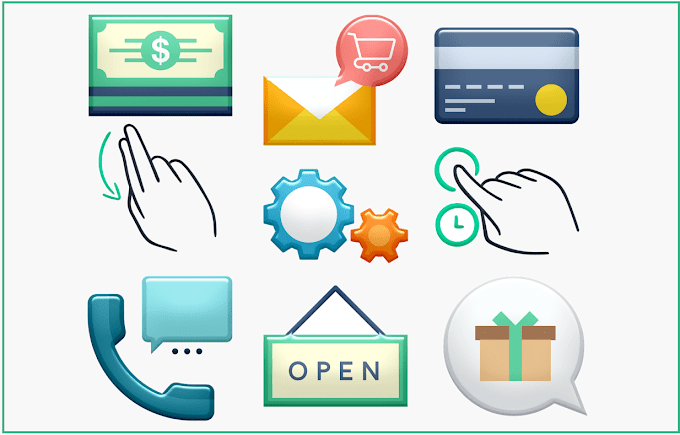
The globe has shifted to a new digital arena where artificial intelligence and machine learning have assumed the role of catalysts. It has been known that the global artificial intelligence market that includes robotic process automation, machine learning, and natural language processing is forecasted to grow at a CAGR of 40.2% by the end of 2028.
As per the reports provided by the Grand View Research, it can be rightly said that the AI/ML market size that was valued at USD $62.35 in 2020 is expected to rise nearby US $87.41 till 2028.
That would be a great transformation overall in the technological domain which would also influence the aspects of associated sectors. Yes! Artificial Intelligence and Machine Learning are lending hands to businesses when it comes to making informed decisions by providing them with the right data sets and accurate insights.
Given the vast potential that AI/ML has to offer it can be truly said that they have become one of the mainstream technologies that are here to stay. This is also because they hold the capability to offer merits such as feasibility and efficiency to enterprise solutions across the globe.
Top-Tier Trends of AI/ML
Let's check out the trends that AI and ML have got for modern-day businesses -
1. Low-Code & No-Code AI
Artificial intelligence was adopted by organizations to optimize manual coding methods in order to drive a more efficient app development process. This leads them to focus on reducing the propensity for hand coding to the least for a quicker outcome.
With low-code and no-code AI platforms, businesses are enabled to easily develop as well as design apps using the relevant tools, and with only a basic understanding of computer science or software engineering concepts. This would also save such businesses from relying heavily and solely on AI experts that could lead to extended costs.
Being a quick and low-cost alternative, low-code & no-code AI is all about cutting the mundane processes, be it pre-processing and designing or retraining and deployment. This trend thereby helps enterprises by allowing them to construct and deploy applications without burning the pocket. Low-code/no-code ML is all about quick implementation that helps developers reduce the development time by removing the need of debugging.
2. TinyML
Being a vital part of machine learning, TinyML helps shrink deep learning networks to help developers use it to fit on any compact hardware. It helps a seamless amalgamation of smart devices with the artificial intelligence, thereby making it an ideal choice for both large and enterprise-level ML applications.
TinyML is actually a smaller-scale ML on IoT edge devices that helps enterprises enjoy merits such as that of user privacy, lower latency, lower power consumption, and lower bandwidth. Moreover, the organizations also don't have any need to send the data to any data processing center for achieving benefits of latency, power consumption, and bandwidth.
3. AutoML
As the name suggests, AutoML is Automated Machine Learning that covers the absolute pipeline starting from the raw dataset to the deployable ML model. AutoML is basically a simple process that brings in automation to apply machine learning to real-world problems and scenarios.
AutoML helps developers improve data labeling tools while also allowing them the ability to automatically tune the neural network architectures. Unlike manual data labeling that requires labor outsourcing, AutoML is all about automation and eliminates the potential risks that could arise because of human error.
4. Digital Twins
The top-tier organizations are already considering digital twins in their 2022 strategy! Digital Twins have found their use in modeling and simulating human behaviors as well as evaluating future scenarios.
There are many variants of digital twins available in the market which organizations can use as per their specific requirements. These are -
- ● Real data-based digital twins
- ● Asset-based digital twins driven by IoT (Internet of Things)
- ● Customer-driven digital twins
- ● Ecosystem-driven digital twins
Digital twins display vast possibilities to businesses in the form of fresh ways to leverage as well as forecast data and introduce next-stage evolution with convergence of industrial simulation, scientific computing, and artificial intelligence. This further helps build simulation intelligence where foundational simulation elements are built into operating systems.
5. Augmented Intelligence
Augmented Intelligence is all about improving cognitive performance by blending the machine and human aspects. It assists different platforms to gather multiple types of data, be it structured or unstructured from varied sources for presenting it to provide an absolute picture of the customers.
Given the data provided in one of the Garter reports, it could be known that the AI-augmented automation would be employed majorly by infrastructure and operations teams - nearly about 40% so as to garner higher IT productivity.
Resultantly, the contribution of digital workers will increase by 50% by 2022 end. This leads to the increased adoption of Augmented Intelligence amongst top sectors such as healthcare, financial services, travel, and retail.
Final Thoughts
This year is eyeing all these five major trends in the technology domain that are claimed to change the game of how the different businesses operate across the globe. Apart from this, latest aspects such as voice assistance and digital data regulation are also getting their share of the limelight when it's about the AI/ML trends.
Businesses strive to make quick decisions, achieve management of complex tasks, and drive with efficiency and accuracy. AI and ML with their top trends are simply easing such struggles of businessmen. Organizations are also facilitated to develop instant choices with the assistance of AI/ML that further leads to cost and time-effectiveness and lets one achieve a competitive edge in the market.




![Performance Marketing - What Is it & How It Works [+ 6 Tools You Can Use]](https://blogger.googleusercontent.com/img/b/R29vZ2xl/AVvXsEj0akcIPU36HHfqWoYrb2LCMNG8OvxPb9drUYKWJZvSXmfbJG0OrjN5jfzTFDmT-9MKcuZt-G-66PiLlIVjgX1DwCNzHeIMW0pjW7W3IB2rZYzx4ISbL2T6JC4M38eubqHxQ3e71l2_n7oxh2f2QdV3d1prJ6z9HQNsSyfjtO18diLxEZg-5wD-I6RINFY/w680/performance_marketing-min.png)





0 Comments